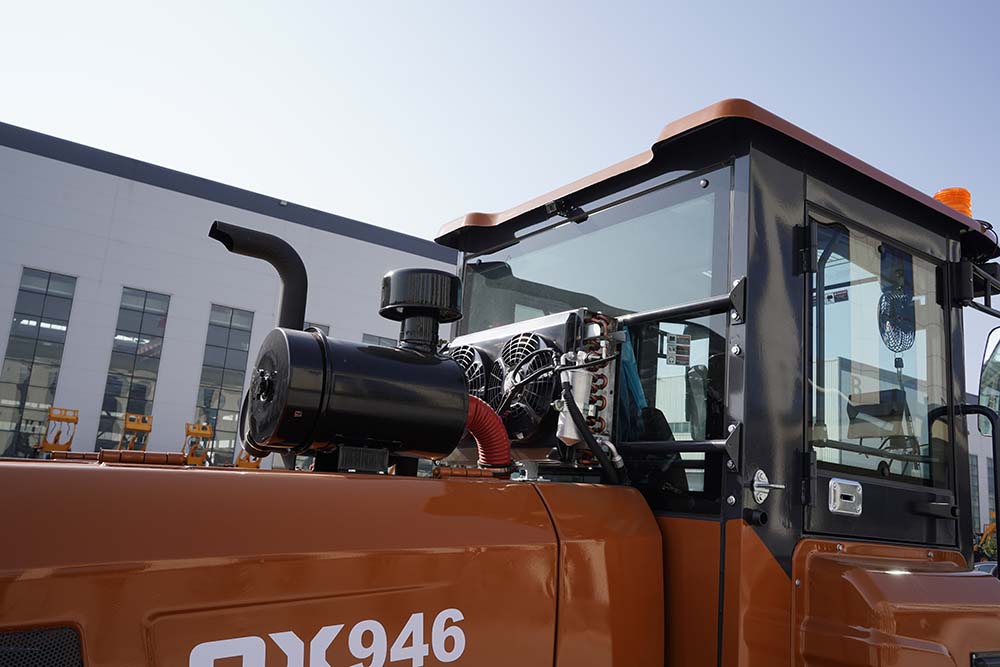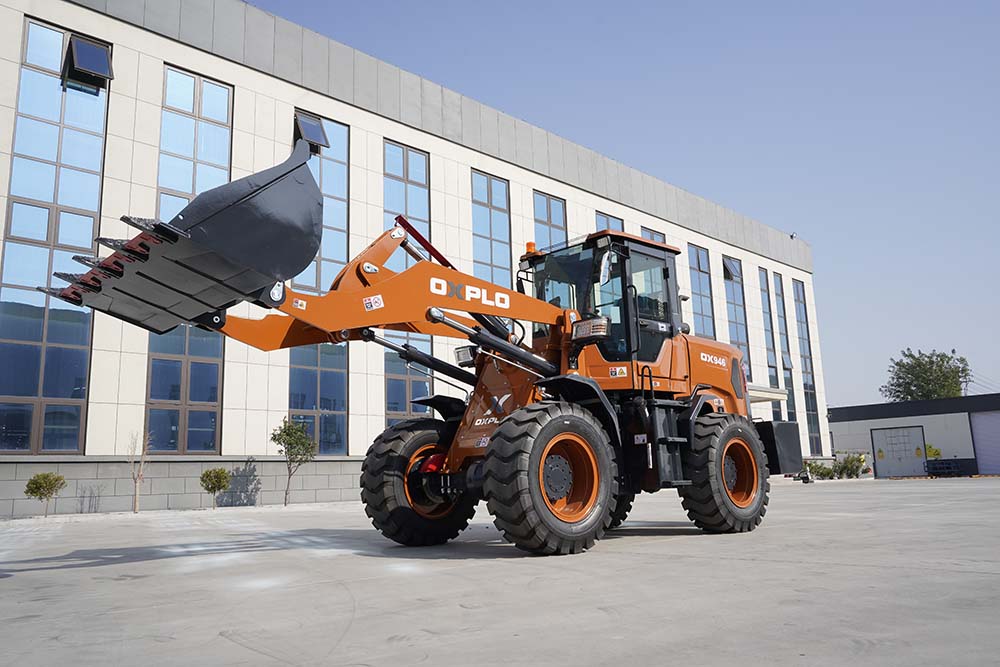Wheel loader operation skills
2024-03-06
OXPLO brand is a professional construction machinery manufacturer, for many years committed to innovation and research and development of high-quality loader products, and strive to provide customers with better quality loader products. In daily engineering construction, wheel loaders are a common construction machinery equipment used for handling and loading materials. This has helped us a lot, allowing us to complete the construction faster. Of course, good operating skills will make the loader improve work efficiency and extend service life. So what should we learn about loader operation skills in daily work?

1. Learn to master the operation: Before using the wheel loader, make sure you have received the relevant training and guidance, familiar with the operation manual, and understand the various control parts and functions of the machine.
2. Safety first: Before starting the operation, ensure the safety of the work area and wear appropriate personal protective equipment, such as hard hats, safety shoes, etc. Make sure you understand the scram button and other safe operating procedures in case of an emergency.
3. Check the machine: Before operating the wheel loader, carry out the necessary machine checks, including fuel levels, lubricating oil, hydraulic oil and coolant. Make sure the tires are properly inflated and check the working condition of the braking system and other key components.
4. Get on and off correctly: When using wheel loaders, get on and off correctly. Use escalators or side doors to enter the cab, and ensure that handrails, pedals and other support structures are stable and reliable to ensure safety.
5. Familiar with the control system: understand the control system of wheel loaders, including steering wheel, throttle, brake, transmission and hydraulic control rod. Be familiar with the functions and operation methods of these control handles in order to better control the machine.
6. Correct operation of the hydraulic control rod: wheel loaders operate the bucket rod, bucket cylinder and bucket through the hydraulic control rod. Learn to use the hydraulic control rod correctly, master the lifting, stretching and rotating operations of the bucket rod, so as to efficiently load and handle the work.
7. Pay attention to balance: When loading and handling materials, pay attention to maintaining the balance of the machine. Ensure that the lifted material is evenly distributed in the shiver and avoid overloading or unbalanced loading causing the machine to lose balance.
8. Smooth operation: When operating wheel loaders, it is necessary to maintain smooth operation, slow and stable movement, avoid sudden braking, sharp turns or rapid acceleration, to ensure the stability of loading materials and the safety of operation.
9. Observe your surroundings: Always be alert and observe the work environment and other people around you. Avoid collisions with other vehicles or people, pay attention to blind spots, and use assistive devices such as mirrors and cameras to increase your field of view.

Regular maintenance: Regular maintenance of the machine, including replacing the filter, checking the hydraulic system, lubricating parts and tightening bolts. Ensure that the machine is in good working condition to improve the efficiency and safety of the operation.

There are some considerations to keep in mind when operating wheel loaders. For example, always put safety first. Understand and comply with all safety regulations and procedures related to loader operation. Wear appropriate personal protective equipment, such as hard hats, safety shoes, earplugs, eye protection goggles, etc. Before operation, carefully inspect the various components and systems of the wheel loader, including the engine, hydraulic system, braking system, tires, lighting and signaling devices. Ensure that all components are working properly and resolve any problems in a timely manner. Familiar with wheel loader controller and instrument panel. Understand the function and operation of each lever and button, and ensure that you have the correct method of operation. This includes steering, throttle, brakes, transmission, and hydraulic levers. Ensure proper distribution and balance of load when loading materials. Do not overload, avoid making the loader exceed its rated capacity. Distribute the material evenly within the bucket to ensure stability and safety. Always maintain smooth operation. Avoid sudden braking, rapid acceleration and sharp turns to prevent the loader from losing balance or material falling. Smooth operation also helps reduce machine friction and breakdowns. Always be alert and observe the work environment and other people around you. Take care to avoid obstacles, uneven ground, and other dangerous areas. Use auxiliary devices such as rearview mirrors and cameras to increase the field of view when operating the loader.

If you are operating a loader in a busy workplace, it is important to communicate and collaborate effectively with other staff, using standard hand gestures or wireless walkie-talkies to keep in touch with others and ensure safe and efficient operations. During the operation, if you encounter any abnormal situation, such as the machine noise becomes louder, abnormal vibration or warning light, etc., you should immediately stop the operation, and troubleshooting or seek the help of professional maintenance personnel, regular maintenance and maintenance of the machine to ensure its normal operation.
OXPLO brand as a professional wheel loader manufacturer, when you buy our wheel loader products, we will provide you with some instructions on the operation of wheel loaders. To help you understand our products faster.

1. Operation manual: Operation manual is one of the most basic documents. It details the operation method of the wheel loader, the function and operation mode of the controller, and the precautions for safe operation. The operating manual usually contains diagrams, diagrams, and step-by-step instructions to help the buyer operate and maintain the loader correctly.
2. Maintenance manual: The maintenance manual provides detailed information about the maintenance and maintenance of wheel loaders, including maintenance plans, lubrication guides, instructions for replacement parts and repair procedures. Maintenance manuals help buyers understand how to regularly inspect and maintain loaders to ensure proper operation and extended service life.
3. Parts catalog: Parts catalog lists the various parts and components of wheel loaders. It provides a detailed part number. Name and description, and their position in the loader. This is helpful for buyers to be able to accurately identify and order the required parts when they need to be replaced.
4. Maintenance guide: The maintenance guide is a detailed guide for the troubleshooting and maintenance of the loader. It provides diagnosis and solutions for common faults, as well as repair steps and related safety precautions. Repair guides help buyers quickly locate problems and take appropriate remedial action in the event of a failure.
5. Training videos or training materials: We will provide training materials or training videos to help buyers just understand and master the operation and maintenance skills of wheel loaders, these resources are illustrated by the driving display, through the example demonstration and explanation of detailed operating steps and technical points.
If you have other problems that can not be solved by the above methods, you can contact us at any time, and our professional technical team will provide you with the most suitable solution.




